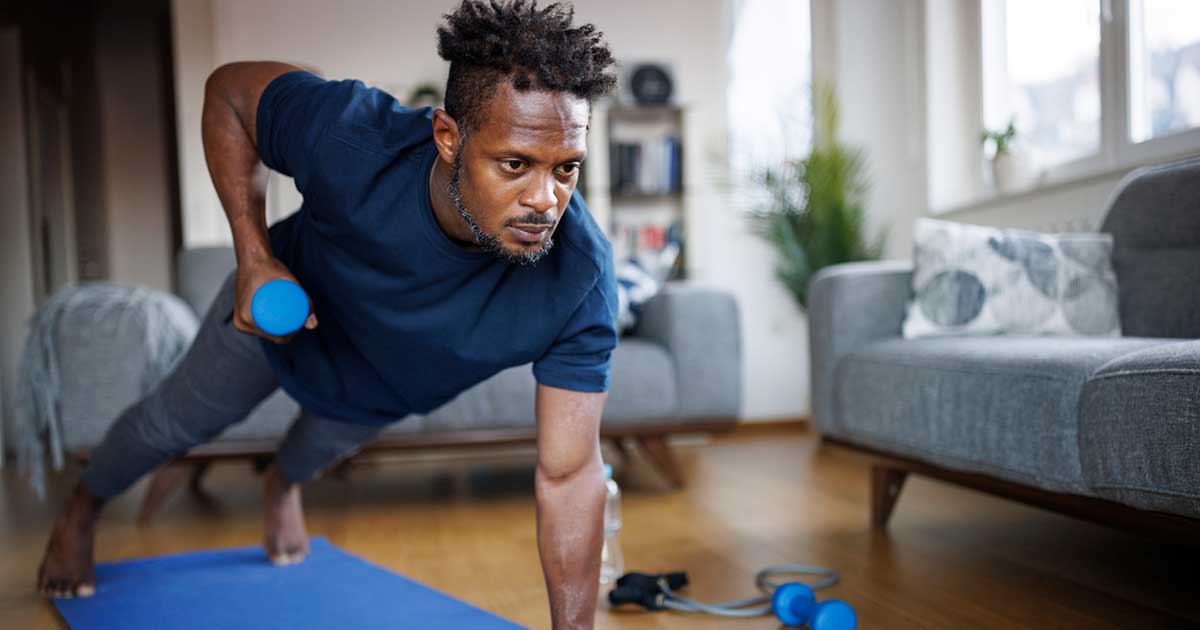VO2 Max: What It Is and How to Improve It
Advice to improve your movement, fitness, and overall health from the world's #1 in orthopedics.
Plenty of factors go into making a person a good runner. One of the most important is VO2 max.
“When you understand your VO2 max, otherwise known as your aerobic capacity, you have a baseline measurement of your fitness level,” says Kate Baird, MA, ACSM-CEP, CSCS, an exercise physiologist on the Sports Rehabilitation and Performance team at HSS. “Improving your VO2 max benefits not only longevity and health, but also your running ability.”

What Is VO2 Max?
To go back to biology class: When we inhale, the lungs take in oxygen. The heart and blood transport that oxygen into the muscles, which fuels a chemical reaction that allows the muscles to move.
To put it simply, VO2 max is the maximum amount, or volume (V), of oxygen (O2) your body can use as a fuel source for exercise. Even more simply, it’s a gauge of how much hard work your body can do. The number is measured by the milliliters of oxygen consumed in one minute per kilogram of body weight. The higher the number, the better your cardiometabolic health.
VO2 max has three primary components:
- Heart volume and lung capacity, or how much oxygen-rich blood your heart can pump and how well your lungs work
- Capillary delivery, or how efficiently the circulatory system can get oxygenated blood to your muscles
- Muscle efficiency, or how adeptly the muscles can extract and use oxygen from that blood
Why VO2 Max Is So Important
Knowing one’s VO2 max is essential for anyone who wants to track their fitness. “Aerobic capacity is the gold standard in determining how fit you are,” says Baird. “In order to meet the demands of aerobic exercise, the heart needs to pump enough blood through the circulatory system, so a higher VO2 max means a better-working heart and a more efficient system.”
That can also mean a longer life. One study concluded that VO2 max was the strongest independent predictor of future life expectancy in both healthy and people and those with cardiorespiratory diseases.
“Runners in particular want a higher VO2 max because the stronger your VO2 max, the more opportunity you have to train at faster and faster paces,” says Baird.
Measuring VO2 Max
The most accurate way to calculate VO2 max is in a laboratory with a medical professional. As you exercise (usually on a treadmill), a special mask measures the amount of oxygen you inhale and the amount of carbon dioxide you exhale. The test is finished when you reach your aerobic max, or the point of practically passing out—whichever comes first.
The test costs money, though, and not everyone wants to train to their limit. Luckily, technology that you wear on your chest, arm or wrist (or a “wearable,” for short) measures your heart rate and GPS data during a run or brisk walk, then puts that into an algorithm to calculate your VO2 max. Though Baird says that most wearables do a good estimation of the equation, the most important way to use them is to track your progress over time.
Improving Your VO2 Max
Even if your VO2 max is low, you can raise it. In general, cardiorespiratory fitness can be enhanced through healthy lifestyle choices and regular physical activity. Some more specific ways to improve your VO2 max include:
- Endurance training. While it may sound counterintuitive, running at a slower pace can actually increase your aerobic capacity. Working at a lower intensity means you’ll work longer and strengthen your aerobic system the entire run. Running slower also taxes the body less, so you can do more of it. In fact, endurance training should make up the bulk of your weekly schedule.
- Interval training. Compared to steady-state cardio endurance training, interval training can improve your heart health in a shorter amount of time. “When you work at your VO2 max, your body can adapt and then increase it,” says Baird. However, since you can’t work at your VO2 max for too long of a clip, jogging or walking between efforts helps you work at your VO2 max for longer overall.
To try this type of training:
- Warm up by walking or jogging at a comfortable pace for about 5 minutes.
- Speed up for about 20 to 30 seconds. On a scale of 1 to can’t catch your breath, this should be about a 6 to 7.
- Return to jogging or walking until your breath slows and you feel recovered.
- Repeat this cycle a few times.
- As you feel stronger, you can increase the efforts to a minute or two, and the recovery times will decrease naturally.
- Sprint interval training (SIT). This type of interval training uses intense pushes, often going above your VO2 max. On a scale of 1 to 10, your sprint bursts should be at a 10, though you won’t be able to hold them for more than about 20 to 30 seconds. If you go hard enough, you should need to walk your recoveries in order to fully catch your breath. (If you’re able to jog, go harder on your sprint bursts.)
Remember, the bulk of your training should be endurance runs. Sprinkle in intervals (and/or SIT) no more than two to three times in a week.
Published 8/14/2024





